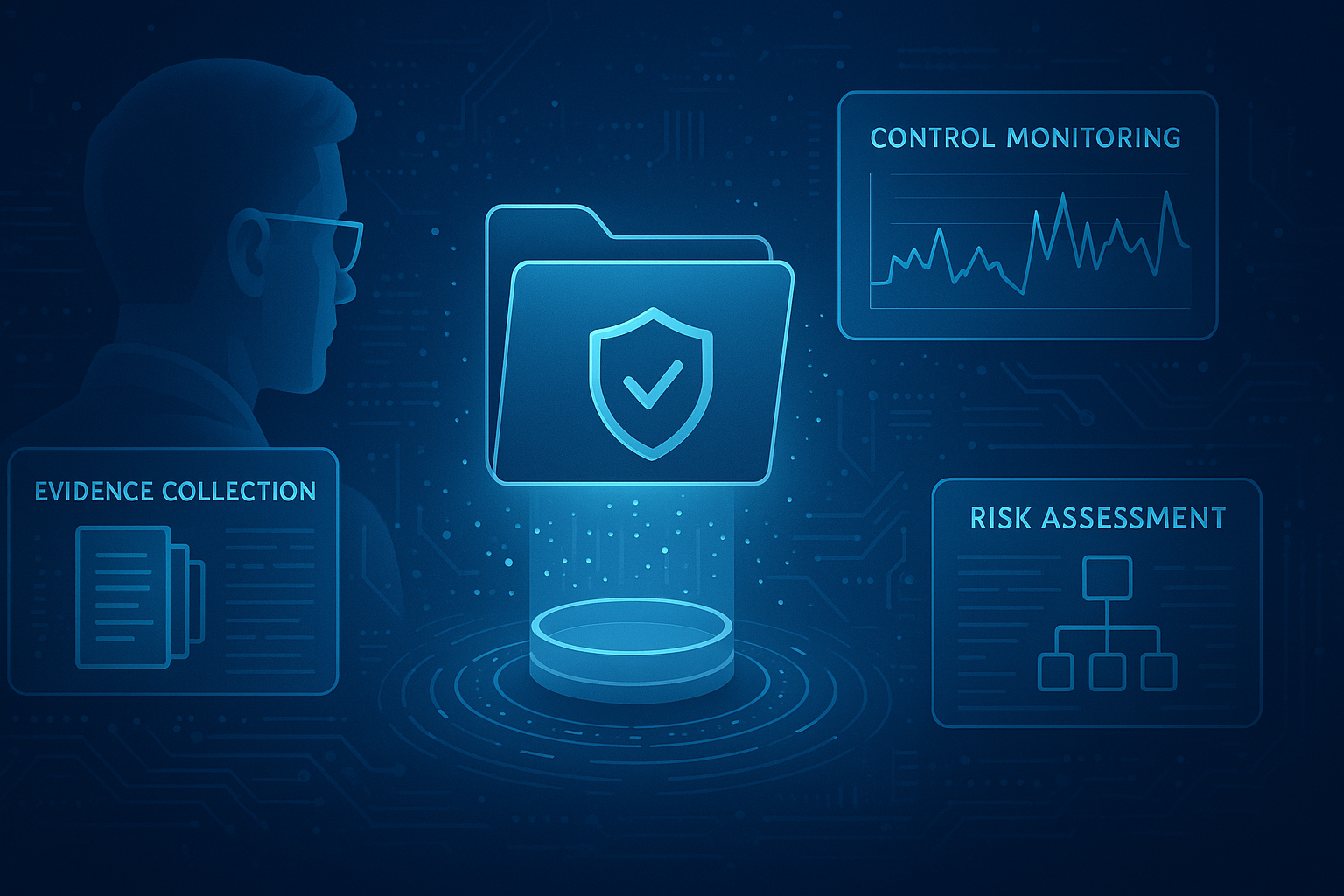The National Institute of Standards and Technology (NIST) has developed Implementation Tiers for the Cybersecurity Framework. The tiers are one of the three main elements of the NIST CSF: the Framework Core, Profile, and Implementation Tiers. They are designed to provide stakeholders with context around the degree to which an organization’s cybersecurity program exhibits the characteristics of the NIST CSF.
NIST explicitly states that the NIST CSF Implementation Tiers are not designed to be a maturity model. Instead, these management tiers are intended to illuminate and guide the interaction between cybersecurity risk management and operational risk management processes. In short, the NIST Cybersecurity Framework Tiers are designed to provide a clear path to roll cyber risk into the overall organizational risk of the enterprise. Much like the Profiles and the Framework Core, the Implementation Tiers serve as a benchmark to assess current cybersecurity risk management practices and help organizations develop plans to enhance their cybersecurity posture. In this post, we’ll explore each of the four Implementation Tiers as you work to understand how your organizational structure might fit into this scoring model.
Each of the Implementation Tiers is broken down into three main components: Risk Management Processes, Risk Management Program, and External Participation, with their own respective functions, categories, and subcategories. Risk management processes refer to the procedures and methods that an organization employs to address cybersecurity risks. The degree to which an organization practices an integrated cyber risk management program indicates that, for top-level management, it has centralized its cyber risk data and can make informed decisions based on that information. With strategic planning, leadership can make cybersecurity decisions that align with the company's overall goals and objectives. Finally, external participation highlights the organization’s awareness within the broader business ecosystem in which it operates.
What are the NIST Cybersecurity Framework Implementation Tiers
Tier 1 - Partial
- Risk Management Processes: At Tier 1 organizations, cybersecurity risk management is typically performed in an ad hoc/reactive manner. Furthermore, cybersecurity activities are typically performed with little to no prioritization based on the degree of risk that each activity addresses.
- Cybersecurity Risk Management Program: The lack of processes associated with cyber risk management makes it difficult for these organizations to communicate and manage that risk. As a result, the organization addresses cybersecurity risk management on a case-by-case basis due to the lack of consistent information.
- External Participation: These organizations lack a deeper understanding of their role in the broader business ecosystem, including their position in the supply chain, dependencies, and interdependencies. Without understanding its position in the ecosystem, a Tier 1 organization does not share information effectively (if at all) with third parties. It is generally unaware of the supply chain risks it accepts and passes on to other ecosystem members.
Tier 2 - Risk-Informed
- Risk Management Processes: While management approves, risk management practices are typically not established as organization-wide policies within Tier 2 organizations. While risk management practices are not standardized, they directly inform the prioritization of cybersecurity activities in conjunction with organizational risk objectives, the threat environment, and business requirements.
- Cybersecurity Risk Management Program: Awareness of cybersecurity risk exists at the organizational level, but is not standardized organization-wide, and cybersecurity information is only shared informally. While some consideration for cybersecurity is included in organizational objectives, it is not a standard practice. A cyber risk assessment may be conducted, but it is not a standard procedure and is periodically repeated.
- External Participation: Tier 2 organizations understand their role in the ecosystem in terms of dependencies or dependents, but not both. Organizations like this typically receive information but do not share it. While they are aware of the risks associated with their supply chain, they do not typically take action on them.
Tier 3 - Repeatable
- Risk Management Processes: Tier 3 organizations have formally established and documented risk management practices, which are expressed as policy. These practices are regularly updated in response to changes in business requirements and the evolving threat landscape.
- Cybersecurity Risk Management Program: This tier has a higher-level organization-wide approach to managing cybersecurity risk. Risk-informed policies, processes, and procedures are defined, implemented, and reviewed. There are methods in place to consistently respond effectively to changes in risk, and personnel possess the knowledge and skills to perform their roles. Senior cybersecurity, board of directors, and business-side executives communicate regularly regarding cybersecurity events and risks.
- External Participation: Tier 3 organizations understand their role in the ecosystems and contribute to the broader understanding of risks. They regularly collaborate with other entities that align with internally generated information shared with them. These organizations are aware of the risks associated with their supply chains and take formal steps, including implementing written agreements to communicate baseline requirements, governance structures, and policies for implementation and monitoring.
Tier 4 - Adaptive
- Risk Management Processes: These organizations adapt their cybersecurity practices based on previous and current cybersecurity activities, including lessons learned and predictive factors. They implement a continuous improvement process, including the incorporation of advanced cybersecurity technologies and practices, and actively adapt to a changing threat and technology landscape.
- Cybersecurity Risk Management Program: Building on Tier 3 and Tier 4, organizations clearly understand the link between their objectives and cybersecurity risk. Senior executives monitor cybersecurity risks in the same context as financial and organizational risks. These organizations base budgeting decisions on understanding the current and potential risk environment. Cybersecurity risk is integrated into the organizational culture and evolves from an awareness of past activities and ongoing vigilance.
- External Participation: Integrating itself further into the ecosystem beyond Tier 3, Tier 4 organizations receive, generate, and contribute to the understanding of the ecosystem around risk. Further integration of sharing information with internal and external stakeholders enables the organization to use real-time information to understand and regularly act on supply chain risks. They also have a formalized process integrated into their documentation with dependencies and dependents.
Benchmark NIST CSF Alignment with the Implementation Tiers
As we’ve discussed, the NIST CSF Implementation Tiers are not meant to be seen as a maturity model. Instead, consider them benchmarking tools and clear directions for improving your organization's approach to cybersecurity.
Discover our automated risk assessment solution, CyberStrong, that enables you to score using the Implementation Tiers and score your organization as you complete an assessment, rather than after the fact. From there, it is a matter of clearly and compellingly illustrating your findings, soliciting buy-in from all relevant stakeholders, and utilizing the NIST CSF to progress toward your goal Tier.





.png)
.png)
.png)
%201.png)
.png)





